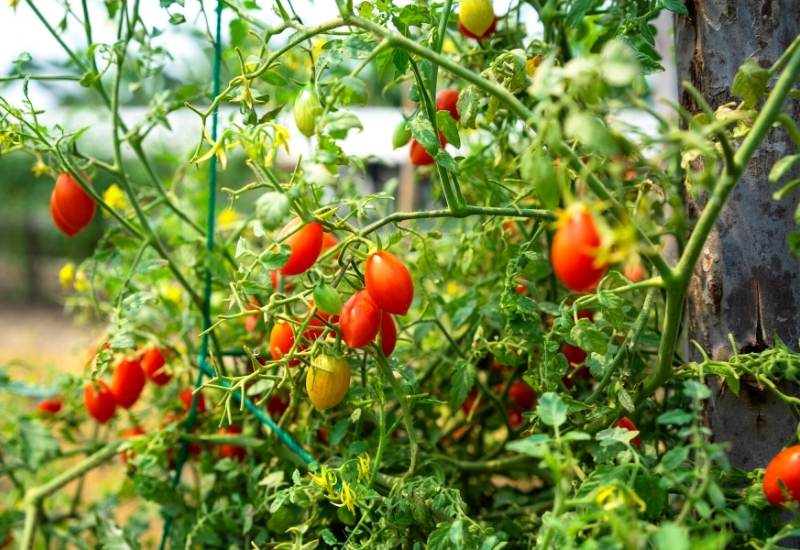
Cherry tomatoes produce smaller fruits than regular tomato plants, and they are popular amongst gardeners as they grow quickly and set fruits early in the season.
They require many of the same conditions as full-sized tomatoes, but there are some specific care requirements that should be acknowledged for the plants to be successful.
So if you’ve never tried growing them before, you need to learn the basics how to grow different types of cherry tomato plants in your garden.
The main stages of growing cherry tomatoes are planting, maintenance, and harvesting, and we will walk through every step so you can understand the ins and outs of growing these tasty fruits.
Choosing the Right Variety of Cherry Tomato
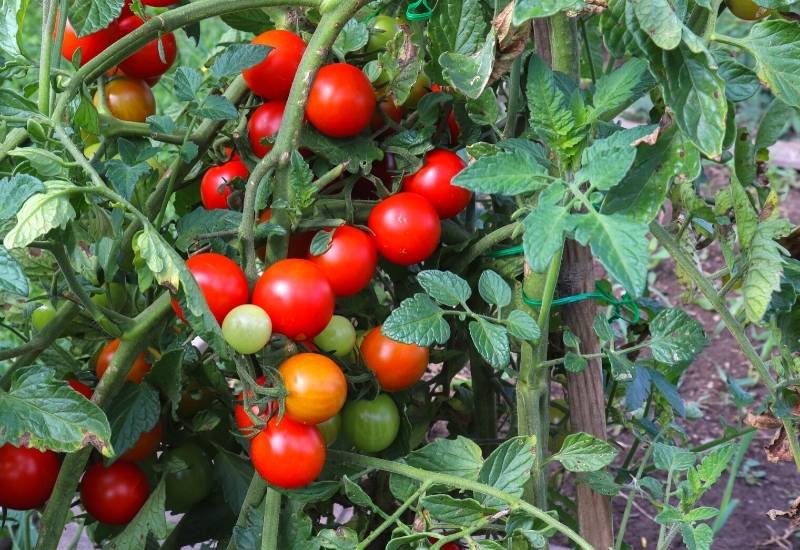
Before we dive into the steps for growing cherry tomatoes, we need to decide which ones we want to grow!
Just like regular tomatoes, cherry tomatoes can be divided into the groups indeterminate and determinate.
To refresh your memory, indeterminate cherry tomatoes are also called vine tomatoes and they grow continuously throughout the season, can become quite tall and produce staggered harvests of fruits.
Determinate cherry tomatoes, also called bush tomatoes, will reach a predetermined size and produce one main wave of fruits that will all ripen around the same time and then be finished for the season.
Most varieties of cherry tomato are indeterminate fruit bearers, but there are still plenty of determinate ones to choose from if you prefer a compact plant.
You can grow cherry tomatoes from seed, or purchase seedlings from a nursery later in the spring. You will have more choice in variety when purchasing seeds, which can be bought from a wide selection of online retailers across the world.
But it can be quite fussy to take care of newly sprouted tomato plants, and given their popularity you will still be able to find a number of cherry tomato cultivars at your local plant nurseries.
Here are some popular cherry tomato cultivars that are likely available for purchase as both seeds and seedlings, and their fruit bearing nature.
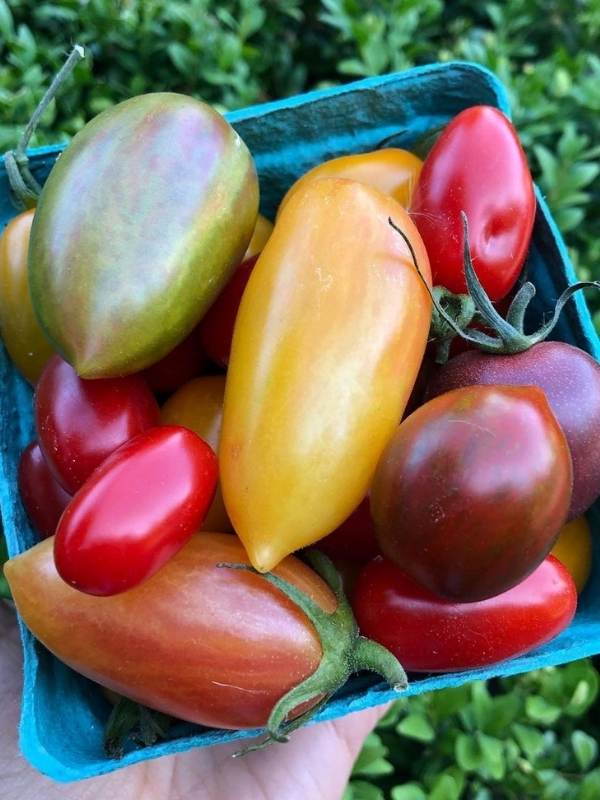
Cultivar Name | Fruit Bearing |
Sunrise Bumblebee | Indeterminate |
Sungold | Indeterminate |
Maskotka | Determinate |
Green Envy | Indeterminate |
Black Pearl | Indeterminate |
Tiny Tim | Determinate |
Maglia Rosa | Semi-determinate |
Sakura | Indeterminate |
Sweetie | Indeterminate |
Gardener’s Delight | Indeterminate |
Yellow Pear | Indeterminate |
Cherry Roma | Indeterminate |
Baby Boomer | Determinate |
Step-by-Step Guide To Growing Cherry Tomatoes from Planting to Harvest
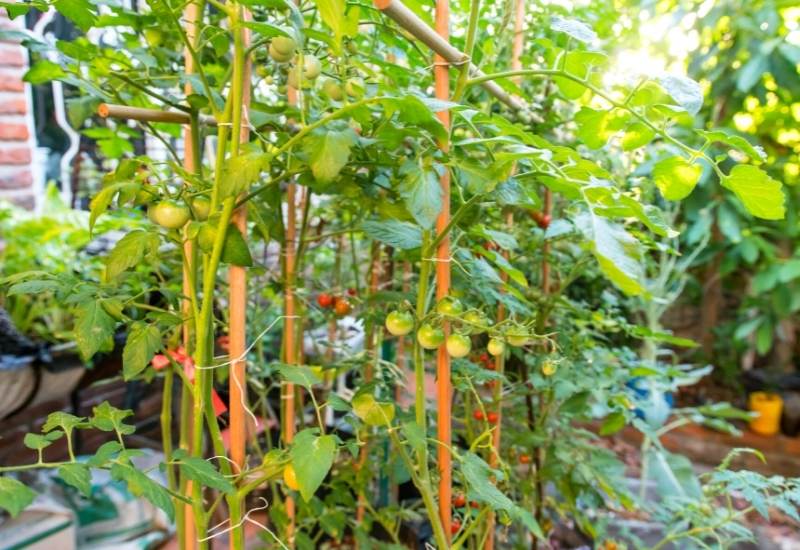
So you have decided which cherry tomato varieties you want, now how do you actually grow and care for the plants?
The following guide, which is broken into the three main stages of growing cherry tomatoes, can be used to answer any questions you may have and ensure your plants have a successful season.
Stage 1: How to Plant Cherry Tomatoes
1: Start your Seeds
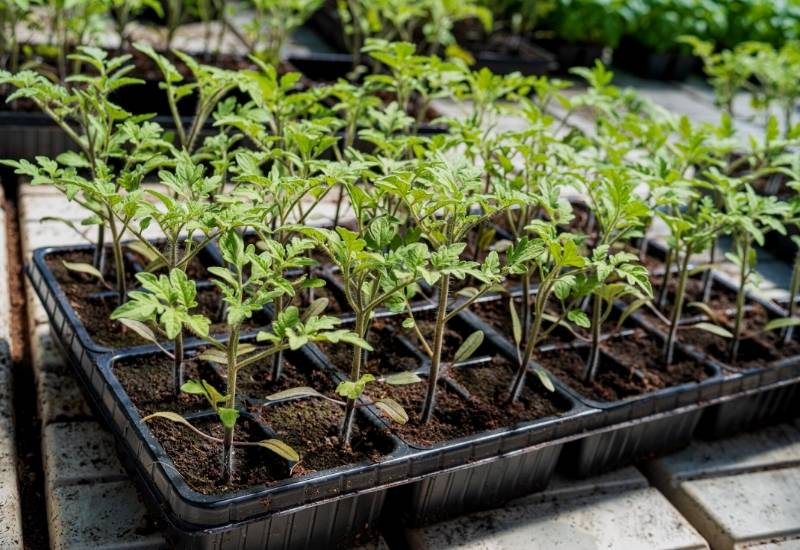
2: Choose your Planting Spot
3: Prepare your Planting Spot
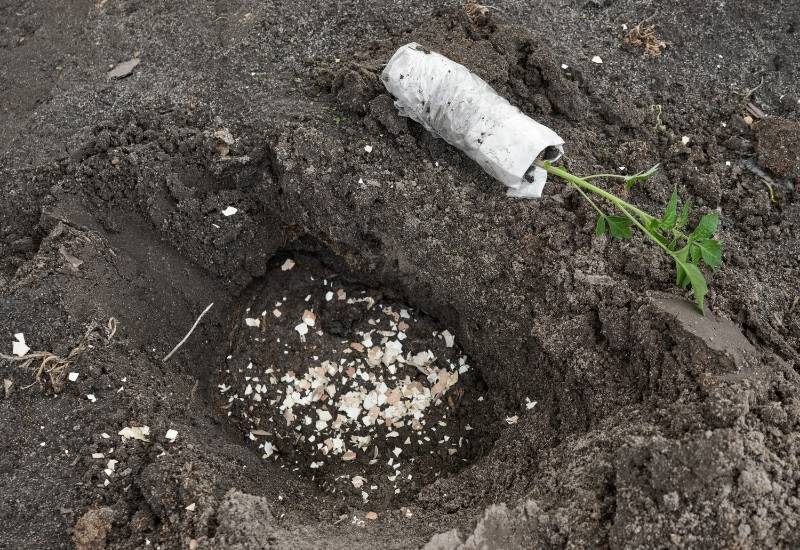
4: Harden Off Seedlings
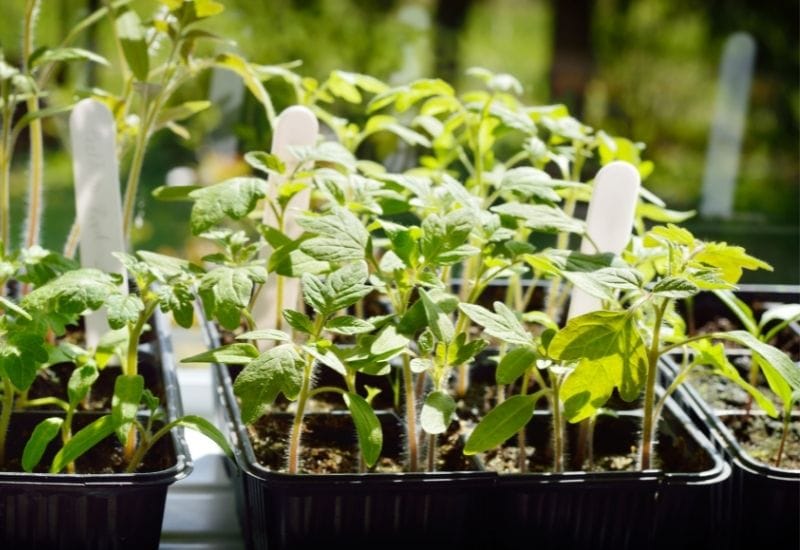
About one week before you are going to transplant your cherry tomato seedlings outside, you can bring them outside for a few hours each day in a process called “hardening off” to get them adjusted to the wind and climate outdoors and reduce the shock of transplanting.
5: Transplant your Seedlings Outdoors
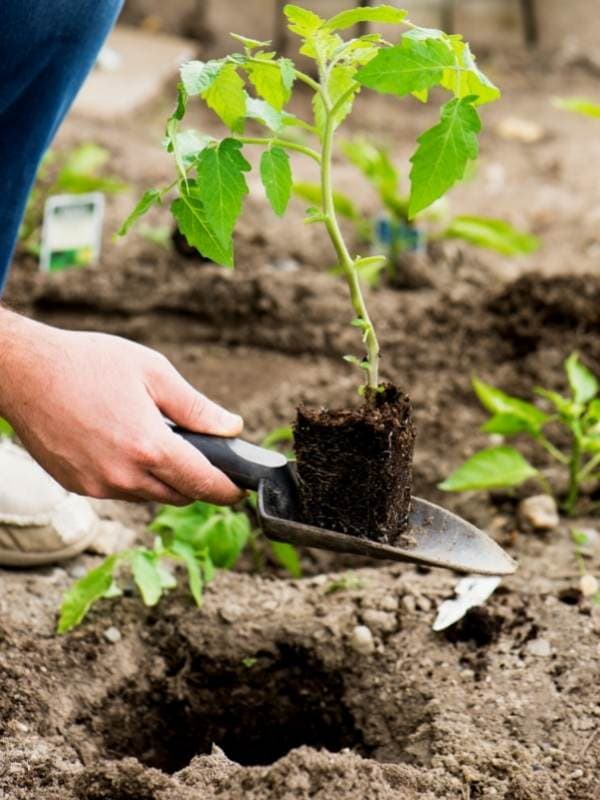
6: Bury your Seedlings
Stage 2: How to Care for Cherry Tomatoes
1: Trellis your Plants
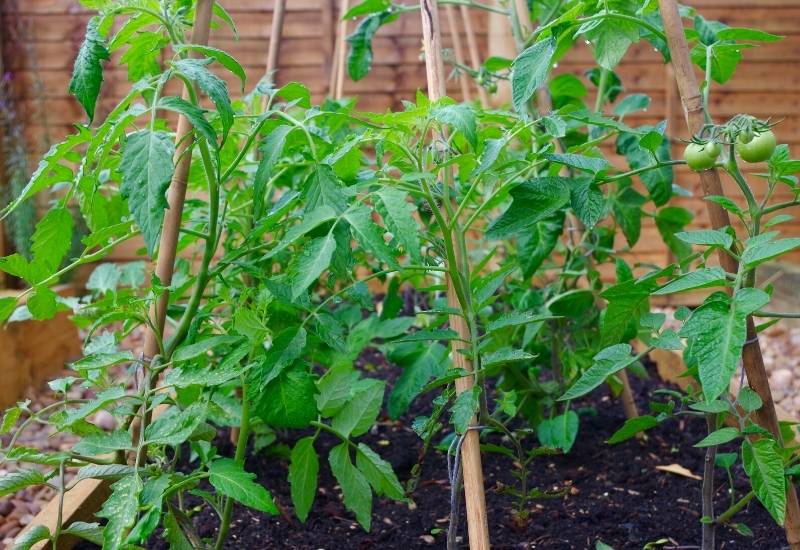
2: Water your Cherry Tomatoes
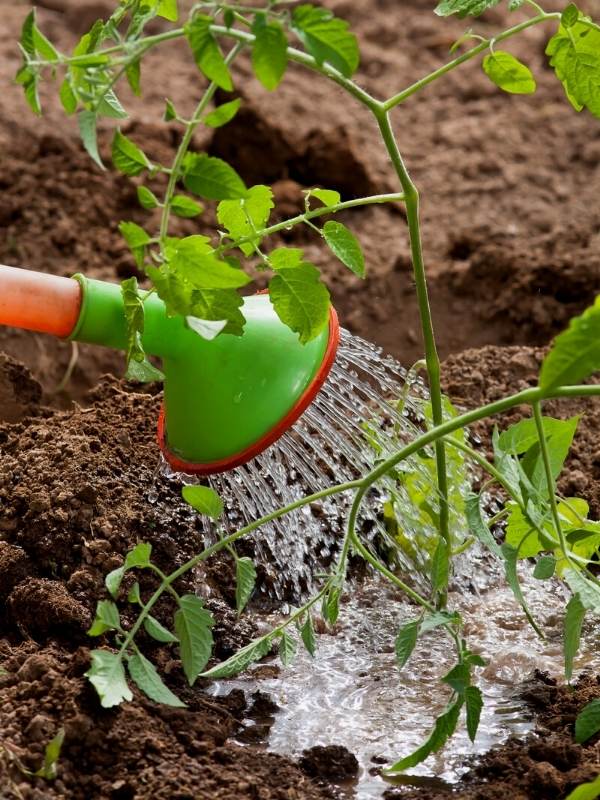
3: Fertilize your cherry tomatoes
You should fertilize your cherry tomato plants once a month with compost or an organic fertilizer that has equal parts nitrogen, phosphorus, and potassium. Make sure to water your plants before fertilizing to avoid burning the roots.
4: Mulch Around the Base of the Plant
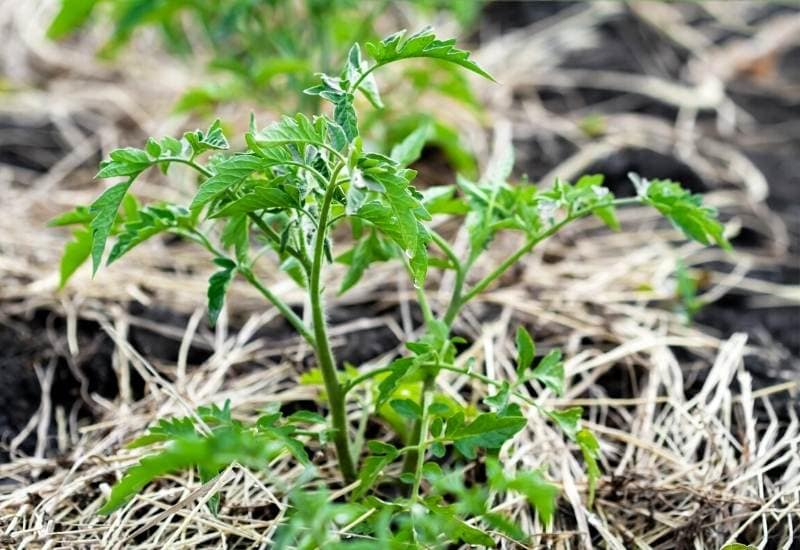
5: Prune Indeterminate Varieties
Indeterminate cherry tomatoes will need to be pruned regularly throughout the season. Determinate varieties do not need to be pruned. As your vine tomatoes grow up your trellising system, remove suckers frequently but allow one or two to develop at a time.
This keeps a good balance between allowing new growth to contribute to a higher yield, without allowing the plant to be overtaken by thick branches and bushy foliage.
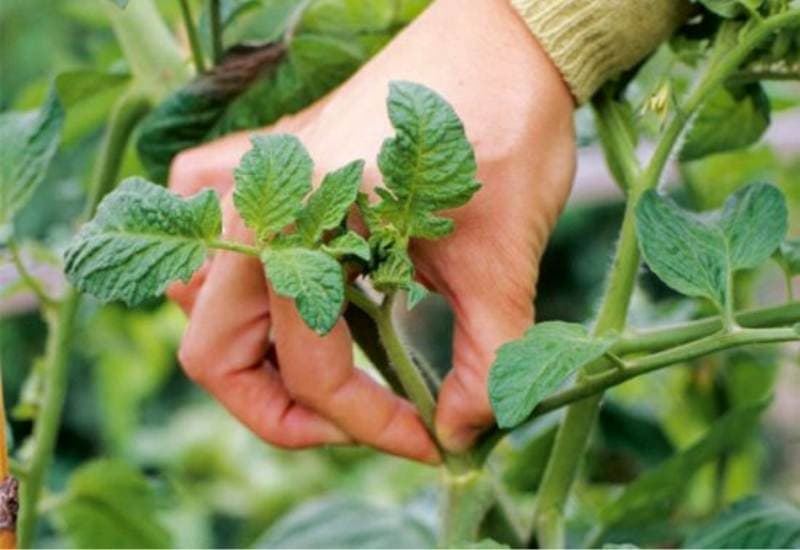
6: Monitor and treat for pests and disease throughout the season.
As you are pruning, trellising, and watering, keep an eye out for pests on the undersides of leaves and any signs of fungal, bacterial, or viral infections.
If you catch and treat issues early there is more likelihood you will be able to control the problem and save your plant.
Stage 3: Harvesting Cherry Tomatoes
1: Check that the Tomatoes Are Ripe
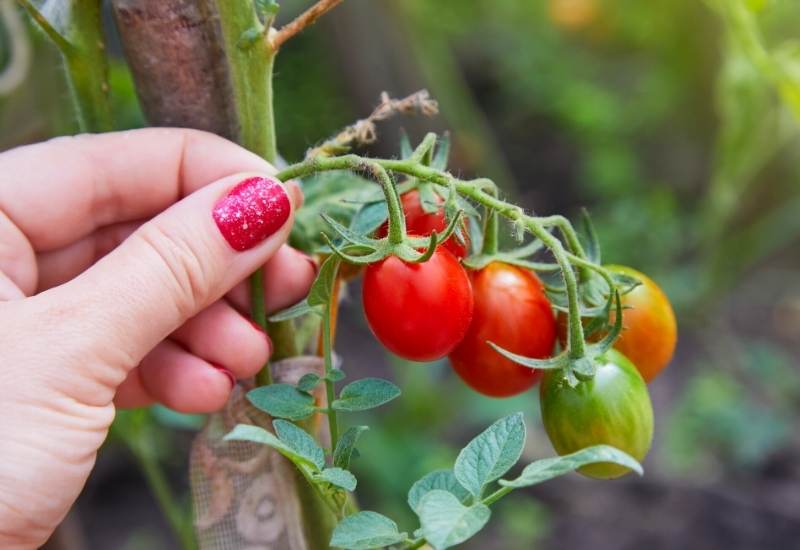
2: Harvest Indeterminate Varieties Continuously
3: Harvest Fruits with a Gentle Tug
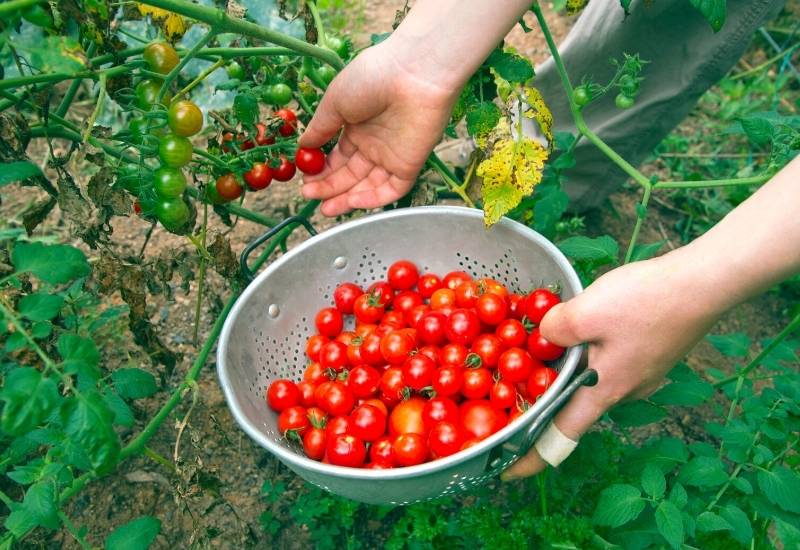
4: Top all Plants before Last Harvest
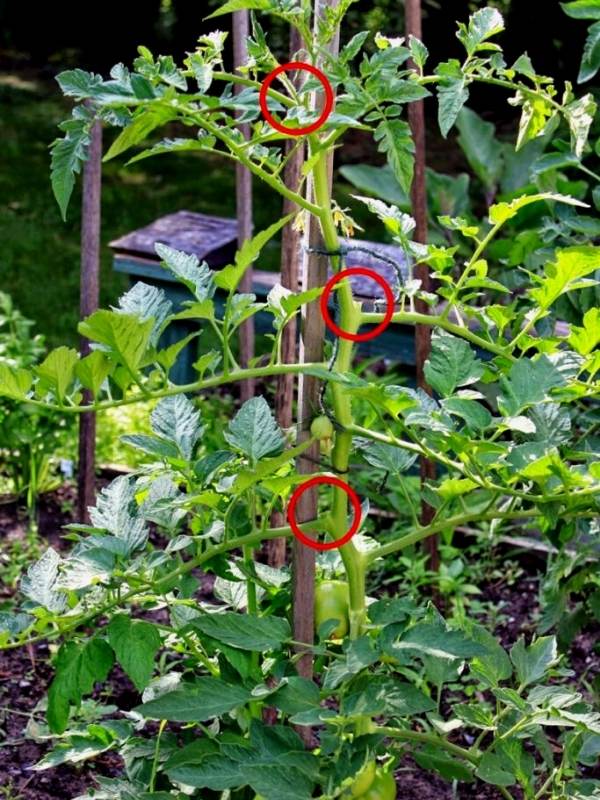
10 Tips for Growing Tons of Cherry Tomatoes
Different Varieties Have Different Care Needs
Cherry tomatoes come in an enormous diversity of shapes, colors, and sizes, so you will need to pay specific attention to the needs of your particular cultivar to determine any extra care needed and to know how they should look upon harvesting.
Trellis Plants Early On
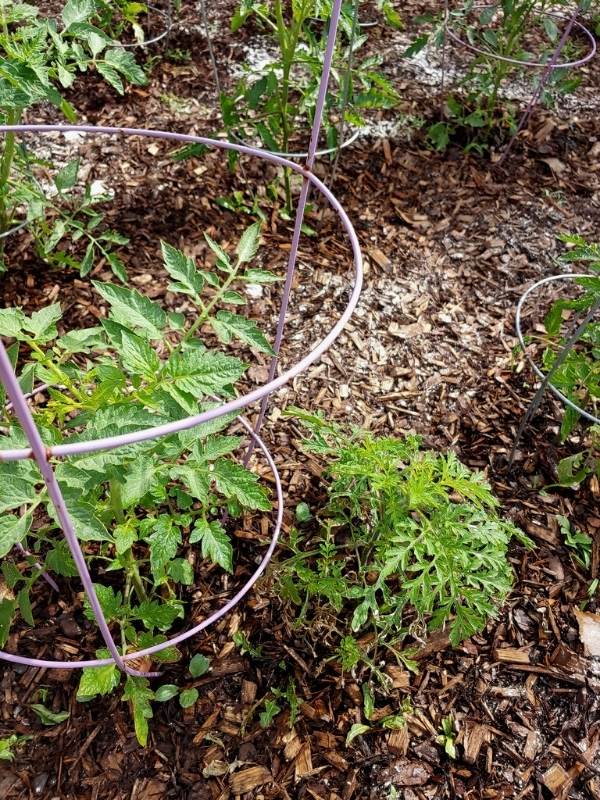
If trellising with tomato cages or stakes that go into the soil near the base of the plant, you should stick them in right when you transplant your seedling. Plunging stakes or cage wires into the soil of a mature plant risks damaging its roots, whereas young plants will simply grow around the obstacles.
Pick Cherry Tomatoes Before A Heavy Rain Event
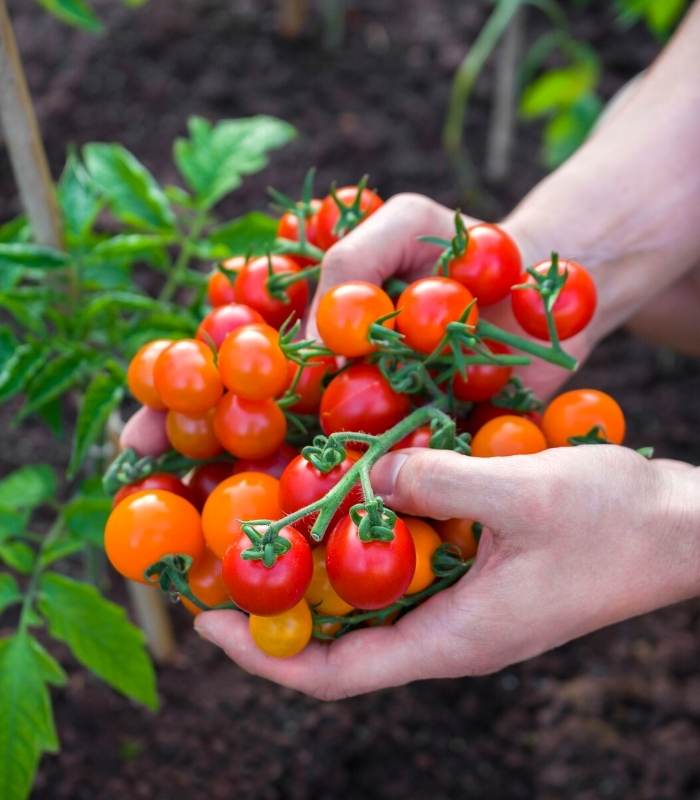
If you predict your cherry tomatoes are only a week or so away from harvesting, and there is heavy rainfall predicted, you can pick them early and let them ripen indoors.
Simply cut away an entire branch that has clusters of fruits on it and hang the branch indoors in a room temperature space without too much direct sunlight.
Heavy rainfall can cause tomatoes to split and crack, which can be very irritating if they were only a few days away from harvest!
Balance Nitrogen And Phosphorus In The Soil
If you are noticing that your cherry tomato plants are growing a lot of lush foliage but not producing many flowers or fruits, you may want to consider amending your fertilizer to be more phosphorus-heavy.
Nitrogen contributes to green, healthy leaf and branch growth, and phosphorus is what contributes to fruit development.
Similarly, if you find that many of your leaves are turning yellow, there may be a nitrogen deficiency in the soil.
Monitor Yellowing Leaves And Branches
As your indeterminate cherry tomatoes grow taller, older leaves that are closer to the base of the plant may begin to yellow and die back.
This is normal and shouldn’t be a cause for concern, and you can prune away any older branches as the plant grows.
However, if you are seeing lots of yellowing leaves or new growth that is yellow, it may be the sign of something more serious like a disease, pest attack, or watering issue.
Practice Companion Planting To Improve Growth
Cherry tomatoes can be planted with a number of companion plants to improve their growth and attract beneficial insects.
Garlic is a popular companion plant as it releases Sulphur into the soil which is a natural anti-fungal and can help in preventing a number of soil borne fungal diseases that target tomatoes.
Borage is another good companion plant for cherry tomatoes that will attract pollinators early in the season to pollinate tomato flowers and increase fruit production.

Written By
Amber Noyes
Amber Noyes was born and raised in a suburban California town, San Mateo. She holds a master’s degree in horticulture from the University of California as well as a BS in Biology from the University of San Francisco. With experience working on an organic farm, water conservation research, farmers’ markets, and plant nursery, she understands what makes plants thrive and how we can better understand the connection between microclimate and plant health. When she’s not on the land, Amber loves informing people of new ideas/things related to gardening, especially organic gardening, houseplants, and growing plants in a small space.
